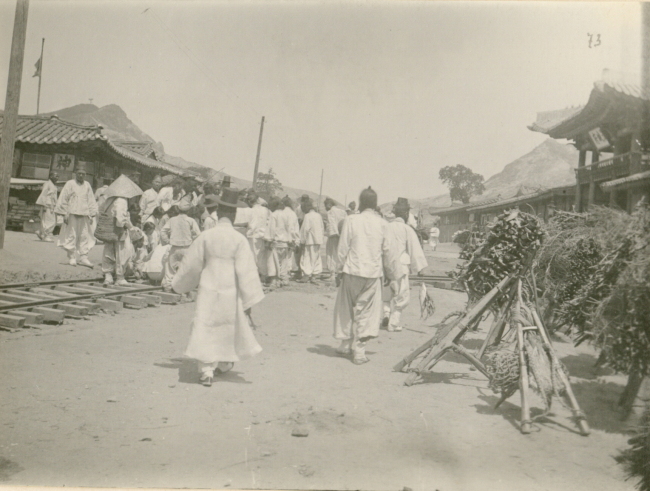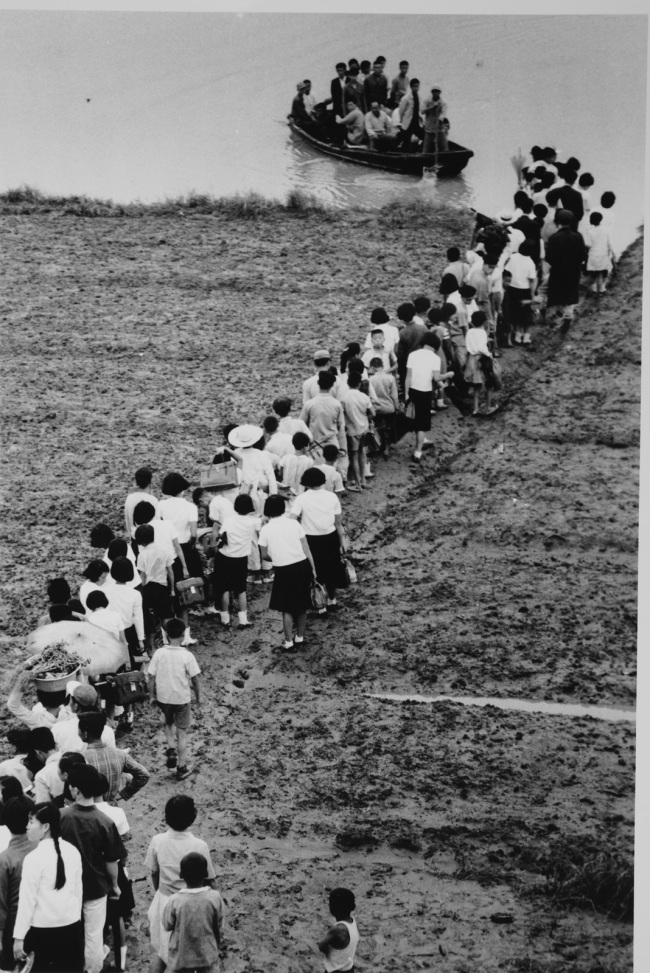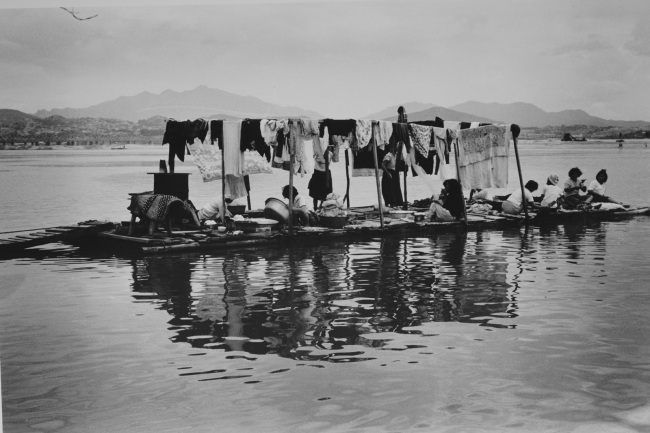Old lives of Seoul from two perspectives
Seoul Museum of History reveals photographer Hong Soon-tai’s portrayal of old Seoul and photos of the city in the early 1900s taken by missionaries of St. Ottilien Monastery in Germany
By Lee Woo-youngPublished : March 4, 2015 - 19:49
Skyscrapers, cutting-edge public transportation and rows of shopping malls ― scenes that define Seoul’s cityscape today ― were unimaginable half a century ago.
It wasn’t until the 1980s that every citizen had access to tap water and toilets in their homes. In the 1960s, and ’70s, citizens in Cheongnyangni had to buy tickets for a bucket of water at a public water station. For daily ablutions, residents of Changsin-dong had to leave their house to use a public toilet located at the center of the neighborhood.
The detailed lives of Seoul citizens has been documented by Seoul photographer Hong Soon-tai. The 82-year-old veteran took thousands of photos of streets, back alleys, pedestrians and workers in Seoul, capturing the lives of ordinary people while the city was fast transitioning.
It wasn’t until the 1980s that every citizen had access to tap water and toilets in their homes. In the 1960s, and ’70s, citizens in Cheongnyangni had to buy tickets for a bucket of water at a public water station. For daily ablutions, residents of Changsin-dong had to leave their house to use a public toilet located at the center of the neighborhood.
The detailed lives of Seoul citizens has been documented by Seoul photographer Hong Soon-tai. The 82-year-old veteran took thousands of photos of streets, back alleys, pedestrians and workers in Seoul, capturing the lives of ordinary people while the city was fast transitioning.

Hong donated more than 700 records of the city to the Seoul Museum of History in 2013. Of them, 400 photographs that offer a glimpse into lives from the 1960s to ’80s are now being exhibited at the museum.
“I would like people to see and remember the reality of our time with the photographs,” said Hong.
The images of devastation of the war-torn city and its fast development have been revealed several times by foreign media outlets and foreign photographers in exhibitions. But Hong’s photographs features a native’s view of the city and its people. They are an honest chronicle of the city, reflecting the photographer’s warmth and respect for citizens during the turbulent modern times.

A section is devoted to portray old memories that people who lived through the decades can easily connect to. For example, one of the photographs shows a long line of students in uniforms waiting for a boat to cross the Hangang River to go to school.
“Not many of us went to school at that time ... . We didn’t have bridges and had to take the boat to go to school,” wrote Kang Jeong-ae, explaining the photo taken in the 1940s.
Seoul was developing at a very fast pace with highways being built and buildings rising next to shanty towns. But Hong’s focus was not on the fast development that the country is proud of. He looked at ordinary people’s lives in the midst of modern buildings and speed lanes, capturing the contrasting view of old lives and fast development.

In a 1969 photo titled “Save our Legacy,” he captured the stark contrast between the overpass and the children playing in the ruins of construction. A 1971 photo shows a small concrete illegal house built under the bridge with children playing and mothers doing the laundry.
He had a unique perspective and found humor in the everyday lives of citizens. He captured a scene of a nun and a young lady in a miniskirt walking side by side on a bustling street of Seoul. A group of old men from the mountainous region of Cheonghak-dong in Mount Jirisan strolling throught the then posh Midopa Department Store is also a notable scene, symbolizing the rapid transition the society was going through.
The museum has also recently published a photo book featuring more than 100 photos of old Seoul taken by Catholic missionaries in the early 1900s. The photos have been in the archive of the Benedictine Congregation of St. Ottilien in Germany, which sent missionaries to Korea in 1909 and established a church in the Hyehwa-dong area.
Norbert Weber, first abbot of the St. Ottilien Monastery, took a deep interest in Korean culture. The interest created many valuable records of Seoul.
He left many photographs of old houses, architecture, sculptures, Buddhist temples of Korea and Mount Geumgangsan. He left numerous photographs and records of the mountain, which were later published in “Record of a Trip to Geumgangsan Mountain.”
The exhibition of Hong Soon-tai’s Seoul Photo Archive runs through May 17. For more information, visit www.museum.seoul.kr.
By Lee Woo-young (wylee@heraldcorp.com)


![[AtoZ into Korean mind] Humor in Korea: Navigating the line between what's funny and not](http://res.heraldm.com/phpwas/restmb_idxmake.php?idx=644&simg=/content/image/2024/04/22/20240422050642_0.jpg&u=)


![[Exclusive] Korean military set to ban iPhones over 'security' concerns](http://res.heraldm.com/phpwas/restmb_idxmake.php?idx=644&simg=/content/image/2024/04/23/20240423050599_0.jpg&u=20240423183955)
![[Herald Interview] Why Toss invited hackers to penetrate its system](http://res.heraldm.com/phpwas/restmb_idxmake.php?idx=644&simg=/content/image/2024/04/22/20240422050569_0.jpg&u=20240422150649)
![[Graphic News] 77% of young Koreans still financially dependent](http://res.heraldm.com/phpwas/restmb_idxmake.php?idx=644&simg=/content/image/2024/04/22/20240422050762_0.gif&u=)






![[Exclusive] Korean military to ban iPhones over security issues](http://res.heraldm.com/phpwas/restmb_idxmake.php?idx=652&simg=/content/image/2024/04/23/20240423050599_0.jpg&u=20240423183955)



![[Today’s K-pop] Ateez confirms US tour details](http://res.heraldm.com/phpwas/restmb_idxmake.php?idx=642&simg=/content/image/2024/04/23/20240423050700_0.jpg&u=)